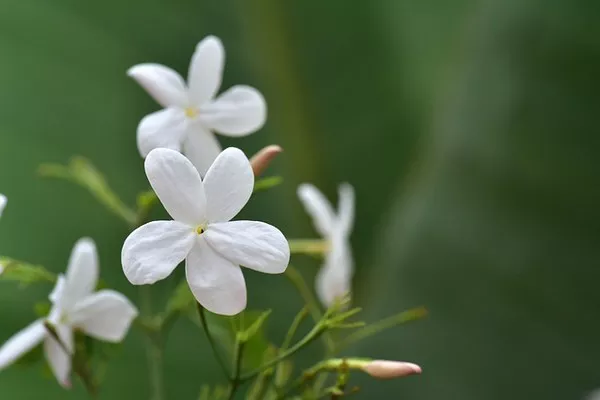The enchanting world of butterflies has captured the imagination of nature enthusiasts and gardeners for centuries. These delicate creatures, with their vibrant colors and graceful flight, add a touch of magic to any garden. To invite these winged wonders into your outdoor space, it’s essential to provide them with the right nourishment. One of the key elements of a butterfly-friendly garden is the selection of flowers. In this article, we will explore the kinds of flowers that butterflies prefer and offer tips on creating a welcoming habitat that will attract them year after year.
Understanding the Butterfly Lifecycle
Before delving into the specific types of flowers that butterflies love, it’s crucial to understand their lifecycle. Butterflies undergo a complete metamorphosis, consisting of four distinct stages: egg, caterpillar (larva), pupa (chrysalis), and adult butterfly. Each stage has specific requirements and preferences.
Eggs: Female butterflies typically lay their eggs on or near host plants that caterpillars will later feed on. These host plants vary among different butterfly species, and they are crucial for the survival of the caterpillar.
Caterpillars: After hatching from the egg, caterpillars feed voraciously on the host plants. They have specialized mouthparts for chewing plant material and often display distinct feeding preferences.
Pupa: Once caterpillars have grown and stored enough energy, they form a pupa, also known as a chrysalis. This stage is crucial for their transformation into adult butterflies.
Adult Butterflies: The adult stage is where butterflies focus on finding nectar-rich flowers for sustenance and mating. Nectar is their primary source of energy, and the types of flowers they visit can greatly impact their survival and reproduction.
Now that we understand the butterfly lifecycle, let’s explore the kinds of flowers that butterflies are most attracted to at the adult stage.
Butterfly-Friendly Flowers
Nectar-Rich Flowers: Butterflies are primarily attracted to flowers that provide ample nectar, their main source of sustenance. Nectar is a sugary fluid produced by flowers, and butterflies use their long proboscis to access it. Some popular nectar-rich flowers that butterflies adore include:
Butterfly Bush (Buddleja davidii): As the name suggests, this shrub is a favorite among butterflies. It produces clusters of fragrant, cone-shaped flowers that come in various colors, including purple, pink, and white.
Coneflowers (Echinacea spp.): These native North American wildflowers have vibrant, daisy-like blooms that attract numerous butterfly species.
Lantana (Lantana camara): Lantana’s clusters of tiny, tubular flowers come in a wide range of colors and are a magnet for butterflies.
Zinnias (Zinnia spp.): These colorful annuals feature large, dahlia-like blooms that provide a rich source of nectar.
Verbena (Verbena spp.): Verbena’s slender spikes of small flowers are a favorite of butterflies and other pollinators.
Native Plants: Planting native species is an excellent way to attract local butterfly species to your garden. Native plants are adapted to the region’s climate and often have co-evolved with native butterflies, providing them with precisely what they need. Research your local area to find out which native plants are suitable for your garden and which butterfly species they support.
Host Plants: In addition to nectar sources, butterflies also require host plants for their caterpillars. Different butterfly species have specific host plant preferences. For example:
Monarch butterflies rely on milkweed (Asclepias spp.) as their exclusive host plant. Planting milkweed is crucial for supporting monarch populations.
Swallowtail butterflies, such as the Eastern Black Swallowtail, lay their eggs on plants like dill, parsley, and fennel. Having these host plants in your garden can attract these beautiful butterflies.
Painted Lady butterflies use a variety of host plants, including thistles and mallows. Planting these can cater to their needs.
Designing Your Butterfly-Friendly Garden
Now that we’ve covered the types of flowers that butterflies prefer, let’s discuss how to design your garden to maximize its appeal to these magnificent insects:
Create a Variety of Heights: Include plants of varying heights in your garden to offer butterflies multiple landing and perching options. Tall flowers like butterfly bush and sunflowers can provide shelter and act as focal points, while shorter plants like marigolds and verbena can create a layered effect.
Choose a Sunny Location: Most butterfly-friendly flowers thrive in full sun. Select a location for your garden that receives at least six hours of sunlight per day.
Group Plants Wisely: Plant flowers in clusters rather than scattering them throughout your garden. This makes it easier for butterflies to locate nectar sources and increases the chances of successful pollination.
Avoid Pesticides: Pesticides can harm butterflies at all stages of their lifecycle, from eggs to adults. Opt for natural pest control methods or, better yet, create a balanced ecosystem that attracts beneficial insects that can help control garden pests.
Provide Water: Butterflies need water for drinking and puddling (sipping minerals from damp soil). Consider adding a shallow dish filled with water or a mud puddle to your garden.
Seasonal Blooms: Choose a variety of flowers that bloom at different times throughout the growing season. This provides a continuous supply of nectar for butterflies and ensures your garden remains attractive to them from spring through fall.
Keep it Organic: Organic gardening practices, such as composting and mulching, can improve soil health and promote strong plant growth, which, in turn, benefits both your flowers and the butterflies that visit them.
Conclusion
Creating a butterfly-friendly garden is a rewarding endeavor that not only enhances the beauty of your outdoor space but also supports these enchanting insects. By understanding the butterfly lifecycle and selecting the right types of flowers, you can transform your garden into a haven for these delicate creatures. Remember to provide nectar-rich blooms, native plants, and host plants to cater to all stages of their lifecycle. With thoughtful planning and care, you can attract a diverse array of butterflies and enjoy the magical sight of these winged wonders in your garden year after year.


